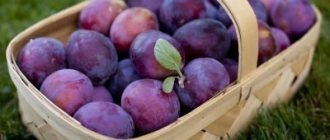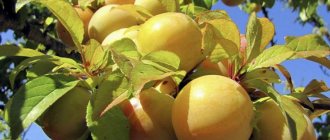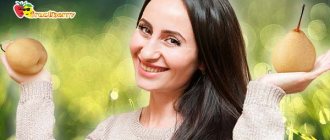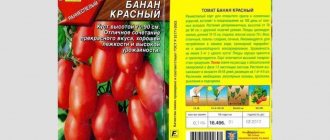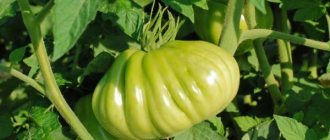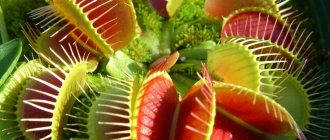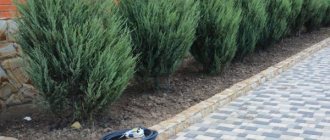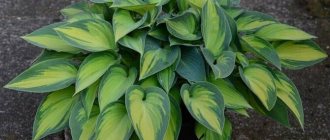History of variety selection
Breeding work is aimed at creating varieties that best meet the needs of gardeners. The Chinese plum Red Ball combines the characteristics of the American Burbank variety and the Russian Ussuri Red plum. The authors were Kh. K. Enikeev and S. N. Satarova. Work on crossing species was carried out in the laboratory of the Moscow All-Russian Selection and Technological Institute of Horticulture and Nursery Growing. The variety was included in the State Register in 1989. This plum variety has a second name: Raspberry Ball.
Application of fruits
As a universal variety “Red Ball” is used:
- in the treatment and prevention of various diseases, as it contains antioxidants and phytonutrients;
- in dietetics, since plums can remove harmful cholesterol;
- in cosmetology, where plum oil fatty acids are used;
- in the confectionery industry (jams, jams, jellies, marmalade, candy fillings);
- in the production of beverages (juices, compotes, syrups, tinctures, liqueurs, light wines).
The Chinese love to give each other fruit baskets as gifts, but you will never see a plum in them, even one as elegant as the “Red Ball”. It’s just that the Chinese word for “plum” sounds similar to the word for “separation.”
Description of plum Red Ball
The tree is very convenient for growing in the garden. Plum Shar Red attracts with the parameters of not only the fruit, but also the tree. An adult plant reaches a height of no more than 2.5 m, which makes care, as well as harvesting, very comfortable.
The bark is smooth and brown in color. There are very few branches on the tree, they are spreading. Therefore, the crown cannot be called thickened. The variety forms ovaries on annual shoots and bouquet branches, which must be taken into account when pruning. The leaves are large, green, matte in color, with a serrated edge. The plum blossoms before the leaves appear. One bud produces 2-3 flowers, so the tree looks like a huge flower. But not every flower produces ovaries. The fruits are the pride of the plum. Large balls, justifying the name of the variety, reach a weight of 40 g each.
The pulp is loose, slightly fibrous, the skin is dense with an invisible side seam. The juice is very aromatic, sweet in taste, tasty and healthy. The bone comes off easily.
Important! You need to harvest the crop on time, otherwise the plums will burst and lose their presentation. According to the recommendations of the originators of the variety, it is best to grow the Red Shar plum in the regions of the Central region.
Reviews
- According to gardeners, plums have good yields.. The advantages include the fact that the seedlings begin to bear fruit within 2–3 years after planting in open ground, which is quite early. The fruits also ripen quickly.
The first fruiting is usually not abundant, but there is enough to eat.
- Summer residents who grow plums for sale note that the fruits have good transportability . Plums do not wrinkle or crack when transported over long distances.
- Another advantage of the variety is its resistance to diseases typical of plums . This allows you to save on preventative treatment.
- Reviews often emphasize the unpretentiousness of the variety . Tree pruning needs only preventive and sanitary pruning; fertilizers are not applied to the soil every year. Otherwise, all planting care procedures are standard.
Characteristics of the variety
To get the desired result, you need to be familiar with the characteristics of plums. In this case, the entire algorithm for caring for the variety becomes clear.
Drought resistance, frost resistance
The frost resistance of the Red Ball is very high. Even prolonged frosts down to -35°C and temperature fluctuations do not affect the condition of the tree or its productivity. This characteristic of the Red Ball plum variety allows the fruit to be grown in areas with cold winters. But sudden return frosts are not very desirable; the tree may freeze.
Pollinators of plum Red Ball
For good plum fruiting, it is necessary to plant other varieties. The Crimson Ball is a self-sterile species. The best pollinating varieties for the Red Ball plum are plants that bloom in one period:
- Chinese plum;
- plum Nezhenka;
- Skoroplodnaya plum;
- cherry plum Kuban comet;
- cherry plum Gold of the Scythians.
Important! Do not plant home plum nearby as a pollinator.
Red Ball blooms very early, 2 weeks earlier than other varieties. The number of ovaries should be normalized, and flowers should be removed in the first two years after planting. Otherwise, the fruits will be small and the ripening of the crop will be delayed.
Productivity and fruiting
The plum begins to bear fruit quickly; the first harvest can be harvested 2-3 years after planting. The fruits ripen in August. The flowering feature (the number of flowers from one bud) allows you to collect up to 18 kg of large “plum balls” from one tree.
Area of application of berries
Plum Raspberry Ball is a table variety. Therefore, the fruits are equally good both fresh and prepared. They are used to prepare plum jam, preserves, marmalade, compotes, and juices. A very popular variety for making table wine.
Resistance to diseases and pests
Chinese plum variety Red Ball is highly resistant to hole spot (clasterosporia), monilial blight and other fungal infections.
Advantages and disadvantages of the variety
The description of the Raspberry Ball plum and reviews from practicing gardeners make it possible to highlight the advantages and disadvantages of the variety. The advantages include:
- versatility of use, taste and commercial qualities of fruits;
- high productivity;
- early ripening;
- good transportability;
- precociousness;
- frost resistance;
- convenient tree size, medium crown density.
Gardeners consider the disadvantages of this variety to be:
- early flowering period, which may coincide with the period of return frosts;
- self-sterility, need for additional pollination;
- warming up the root collar in the spring.
Collection, storage and use of crops
One Red Ball tree produces 18–20 kg of plums per season. The fruits begin to ripen in July and should be collected in early August. If the harvest is too abundant, the fruits are small and take longer to ripen. You can’t overexpose plums on a tree - they will crack and crumble .
The crop is harvested in several stages as it ripens. Collection begins from the lower outer part of the crown. You need to pick the fruits together with the stalk, being careful not to damage the wax coating. Regular plastic buckets work well for collection. The collected fruits can be placed in wooden boxes, wicker baskets or cardboard boxes. It is advisable to lay it in one layer.
Wicker baskets are good for harvesting.
The shelf life is short - a little more than 1 week in the refrigerator. In a ventilated room with a constant humidity of 85% at a temperature of 0 - +2 degrees, whole undamaged plums are stored for 2-3 weeks. If you want to preserve the harvest for 1.5–2 months, pack the plums in plastic bags, seal them tightly and keep them at zero temperature.
Plum tolerates transportation well.
Plum makes a beautiful and tasty liqueur
Red ball belongs to the table variety, that is, it is better to eat it fresh. But this does not mean that such plums cannot be used to make compotes, jams, bake fruit pies, make juice and other drinks.
Landing Features
Planting the Raspberry Ball variety is no different from other plums. But the further development and growth of the seedling depends on the quality and timeliness of the event.
Recommended timing
In the regions of the middle zone, the Red Ball plum is planted in the spring, preferably in April. For the southern regions, autumn planting is recommended: at the end of September or beginning of October. If the seedling is purchased at a later date, it is buried in an inclined position until spring.
Choosing a suitable location
For the Red Ball variety, the optimal location would be a plot on the south-eastern or western side of the garden with fertile soil. Plum trees do not tolerate stagnant water, so they plant the tree on a hill or provide good drainage. The second nuance is protection from drafts. This role can be played by the wall of a building or bushes. Important! Plums should not be planted in close proximity to nightshades.
What crops can and cannot be planted nearby?
Plum responds favorably to the proximity of apple trees, black elderberries and currants. But you shouldn’t plant Raspberry Ball next to walnut, pear, hazel, fir, birch, and poplar. For small garden plots, combining a plum with a pear is possible only if the distance between the trees is at least 4 m.
Selection and preparation of planting material
To plant plums, it is better to take an annual Red Ball seedling. According to the observations of gardeners, they take root well. Focus on:
- Roots. Must be moisturized, without damage, kinks, or signs of rotting.
- Kore. It is important that there are no cracks or wrinkles, and that the stem is in good condition.
Landing algorithm
3 weeks before planting the Raspberry Ball plum, dig a hole 65 cm x 70 cm.
Mix fertile soil (2 buckets) with humus or compost (1 bucket), 400 g of superphosphate, 1 kg of wood ash. Soak the roots of the plum seedling for 6 hours in water.
Form a mound of soil at the bottom of the hole, install a plum seedling, and smooth out the roots.
Sprinkle with soil.
Important! The root collar should not be buried; it should rise 5 cm above the soil level.
Create a circle around the trunk, water the plum and mulch.
Features of growing Chinese plum
Cultivation and care of Chinese plums are almost identical to the cultivation of local varieties.
But there are certain points in growing a fruit plant:
- Floor. Plums readily grow on chernozems, woody-gray soils, loamy soils with a neutral or alkaline environment and a lot of calcium. The groundwater level should be below 1.5 meters from the soil surface.
- Landing place. Chinese plum loves sunny, spacious, but draft-free places. A suitable place for planting is upland; planting the plant in lowlands is strictly prohibited.
- Landing. It is better to plant healthy trees in the spring, which are cut down to 60% of the original height to ensure vigorous growth and adaptation to new growth conditions. The planting pit usually contains 10 liters of mature manure, 50-60 grams of potassium salt, 250-300 grams of superphosphate. To seal up moisture, the soil in the stem circle is sprinkled with sawdust or peat.
- I'm eating. In the year of planting there is no need to apply fertilizers, and next year watering with a solution of nitrogen fertilizers will be very useful. Trees that have entered the fruiting phase are fed for the first time before flowering (60 grams of potassium sulfate and urea are added to 10 liters of water). The next fertilization occurs at the stage of fruit ripening. The last application of fertilizer occurs after harvesting.
Watering. Plum trees are water-loving plants, so they are watered regularly and systematically. Particular attention is paid to moistening the soil in the dry season, when it is buried to a depth of at least 40 cm and then mulched. Pests. (Read more about pests and diseases of plums here) Plum fertilizer is dangerous and the main enemy of plum fruits. To destroy them, pheromone traps are used every 14 days and the trees are sprayed with chemical and viral preparations. Pesticide treatment is stopped 30 days before harvest.
Although the Chinese plum is considered a guest in our region, it should be treated with due care.
The undoubted advantages of this variety - early grounding, high frost resistance, relatively high yield - lead not only to increased interest among gardeners, but also to the desire to have a beautiful oriental plum in their landscape. And the rich and luminous flower allows the use of miniature trees in landscape design.
Chinese plum is a promising species used by breeders in scientific research to breed and select new varieties.
In this video you can learn how to properly plant and fertilize a plum:
Bandana on the head: how to tie and wear || Step by step instructions: how to tie a bandana || How to Wear a Bandana
Page 3
Plum white honey is the most delicious and sweet variety.
Although it is called white plum, it is called yellow plum because of its yellow skin and flesh.
So, what is this variety and how to grow it?
Let's look at the full description of white honey plum.
Aftercare for plums
The main measures for caring for the Red Ball variety consist of:
- Glaze. Plum is sensitive to soil moisture. Overwatering leads to rotting of the roots, and lack of moisture leads to drying out. An adult tree needs 25-30 liters per week, especially at the beginning of summer, when the crop is ripening and fruit buds are forming.
- Feeding. The variety does not require annual feeding. For plums, it is enough to apply organic matter and mineral complex fertilizers once every 3-4 years. Organic matter is dug up with the soil, and minerals are added in the form of a solution after watering. You need to feed the early ripening Chinese plum Red Ball in the fall, and add nitrogen components in the spring.
- Trimmings. For this variety, only preventive and sanitary pruning is recommended. The plum crown is not thickened, so attention should be paid to cutting out shoots, shortening shoots, and removing broken and dry branches.
- Preparations for winter. It is necessary to prepare plums for the winter. Despite its frost resistance, the Raspberry Ball variety may suffer from sudden cold snaps after a thaw. The second reason is protection from rodents. Cover the trunk well with mulch, followed by tying it with burlap.
Important! Do not use polyethylene or roofing felt; the variety tends to overheat the root collar.
Advantages and disadvantages - table
The Red Ball variety has enough advantages to become a favorite of many gardeners in Russia.
- The excellent taste of the fruits and simply amazing aroma make them a delicious dish immediately after picking. But this variety is suitable for many other purposes.
- High yield. Up to 18 kg can be removed from one tree under favorable conditions.
- Excellent transportability. Thanks to their thick skin, plums do not suffer or deteriorate during transportation.
- Early ripening of the variety. The first plums can be removed in the third, and sometimes in the second year after planting.
- Good frost resistance. The tree successfully winters at temperatures down to -40 °C, especially with good shelter.
- Compact shape. The tree does not take up much space and at the same time has a sparse crown, which greatly simplifies its care, including the pruning process.
- The tree blooms a couple of weeks earlier than usual varieties, which puts it at risk due to the likelihood of damage by return frosts.
- The presence of pollinating insects is required for plums to produce a good harvest.
- In spring, the root collar may swell, which is why rot is likely to develop. But this can be avoided by planting the tree on a mound half a meter high.
Diseases and pests, methods of control and prevention
Chinese plum can be affected by:
| Disease or pest | Prevention and control measures |
| Coccomycosis | Remove plant residues after harvesting and treat with a solution of copper oxychloride (40 g per 10 liters of water). |
| Fruit rot | Regular removal of damaged fruits. Treatment with Bordeaux mixture (1%) when the fruit size is 3 cm. |
| Root cancer | Disinfection of tools and planting material. Treating plums with copper sulfate. |
| milky shine | Autumn whitewashing of the trunk with lime, fertilizing with urea before flowering. |
VARIETIES FOR SIBERIA AND THE FAR EAST
At the same time, when the first varieties of plums came to California, Russian settlers, residents of the village. In 1868, brothers Melnikov and Bezrukov, residents of Astrakhan, Primorsky Territory, discovered a wild plum tree on the site of ancient settlements that were part of the lost state of Bohai, the shoots of which they transplanted into their gardens. The fruits of this plum were yellow, very small (average weight 5-10 g), but the taste was good, and the trees did not suffer at all from the frost of local snowless winters. The same could not be said about the European plum, the seedlings of which the settlers brought from the European part of Russia, and which froze in the very first winter. This wild plum was named Ussuri.
Later, as Primorye settled, local residents began to grow plums from fruit seeds purchased in the markets of neighboring Chinese cities. This process expanded significantly with the construction of the Chinese Eastern Railway, along the entire length of which a large number of Russian employees and workers lived at stations throughout Manchuria. The Russian colony in Harbin numbered hundreds of thousands of people. They ordered plum seeds from southern Manchuria and selected the most winter-hardy ones among the seedlings. In the vicinity of Harbin, there was a Harbin experimental field, where testing and selection of the best varieties of agricultural crops were carried out. This is how winter-hardy varieties of Chinese plum 'Manchurian beauty', 'Manchurian prune', 'Yellow Radchenko'
and others.
Although they were inferior in winter hardiness to the Ussuri
,
they were significantly superior to it in the size and quality of the fruit.
Their fruits are of various colors with an average weight of 15-20 g. This was the beginning of the plum culture in the Asian part of Russia. Chinese plum became the main fruit crop, first in the Far East, and then in the south of Siberia and the Urals. Here it replaced the home plum, which is familiar to residents of the European part. The latter turned out to be unwinter-resistant under these conditions.
At the end of the 30s of the last century, G. T. Kazmin began extensive breeding work with plums in Khabarovsk. It was a time of enthusiastic breeders, to whom the government provided every opportunity for work and fully supported them. Everyone heard about the remarkable results of I.V.’s selection work. Michurin, which were promoted in every possible way. We still use the results of the work of these breeders.
'Manchurian beauty', 'Manchurian prune', 'Primorskaya' as initial forms
he created a whole series of varieties that are winter-hardy in the harsh conditions of Khabarovsk and are distinguished by good quality fruits. Five varieties created more than 60 years ago by G. T. Kazmin are still included in the zoned assortment for the Khabarovsk and Primorsky territories.

